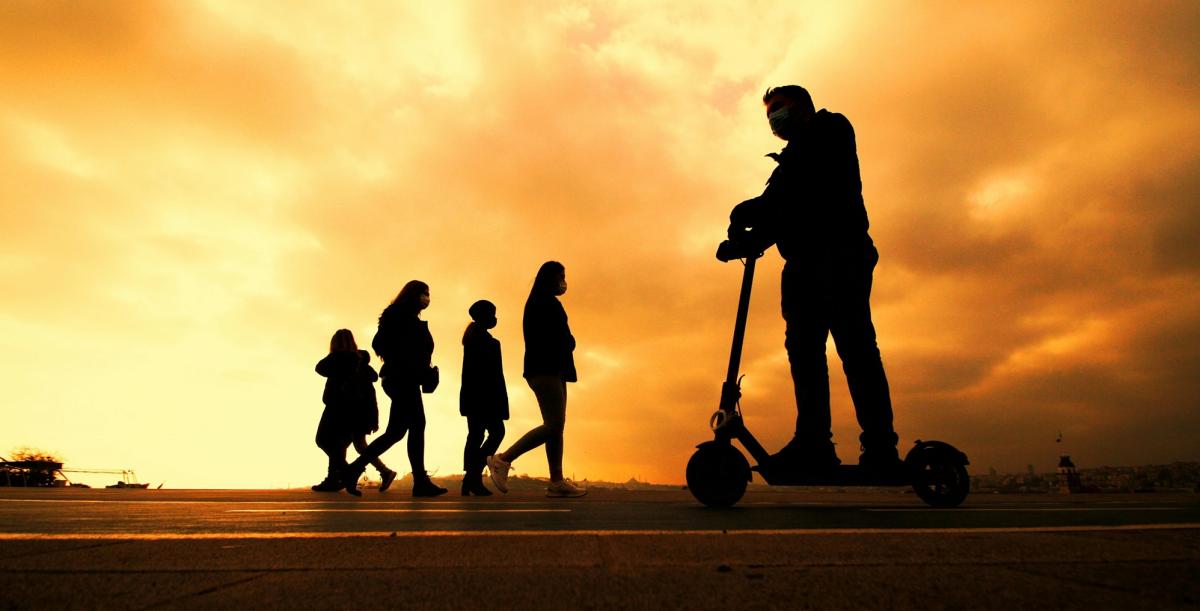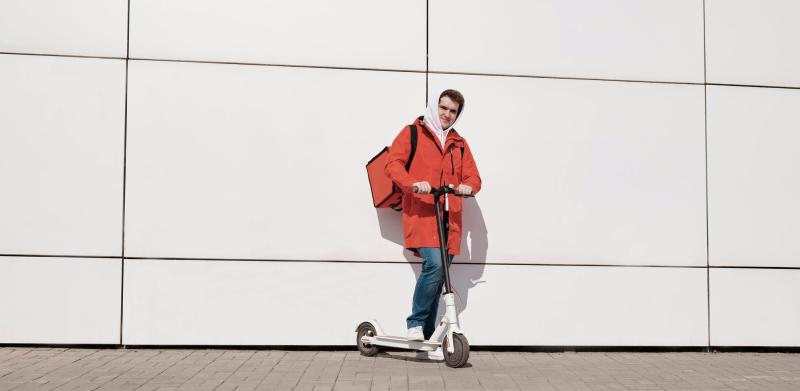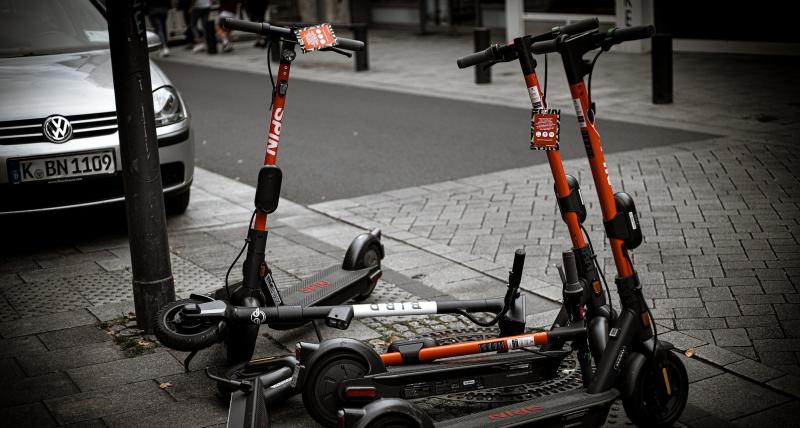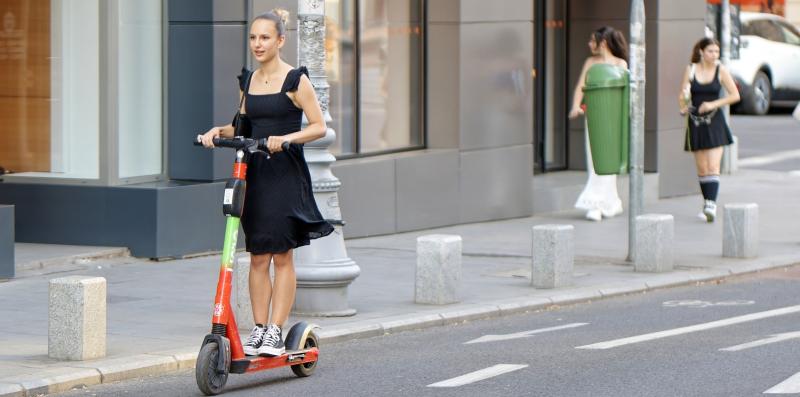Riding an electric scooter at night can be a thrilling experience, but it comes with additional safety challenges. Low visibility, reduced reaction time, and the presence of other vehicles make it essential to take extra precautions. In this guide, we’ll share important tips on how to safely ride your electric scooter at night, covering everything from lighting to awareness techniques to ensure a safe journey.
Why Night Riding Requires Extra Caution
Nighttime riding is riskier due to reduced visibility and the likelihood of encountering tired drivers or unexpected obstacles. To stay safe, it’s crucial to enhance your visibility, maintain full awareness of your surroundings, and ride at a controlled pace. By following these steps, you can reduce risks and enjoy your nighttime scooter ride with confidence.
Essential Safety Tips for Riding an Electric Scooter at Night
1. Use Proper Lighting
Visibility is key when riding at night. Ensuring your electric scooter is well-lit allows you to see the road ahead and makes you visible to other vehicles and pedestrians:
- Headlight: Make sure your scooter has a bright, front-facing headlight to illuminate the path ahead. Ideally, choose a headlight with at least 300 lumens to provide adequate visibility.
- Taillight: A red taillight at the back of your scooter helps alert vehicles behind you to your presence. Check that it’s bright enough to be seen from a distance.
- Additional Lighting: Consider adding extra lights, such as handlebar-mounted lights or helmet lights, to improve visibility. Lights on your clothing or backpack can further enhance your visibility.
Pro tip: Ensure that your lights are fully charged or bring spare batteries to avoid losing visibility during your ride.
2. Wear Reflective Clothing
Reflective clothing makes you more visible to drivers, especially in low-light conditions. Adding reflective elements to your attire is a simple but effective way to stay safe:
- Reflective Jacket or Vest: Wear a reflective jacket or vest over your regular clothing to increase visibility.
- Reflective Straps or Tape: Attach reflective strips or tape to your scooter, backpack, and helmet to make yourself even more noticeable.
- Reflective Shoes: Shoes with reflective elements are another way to catch drivers’ attention, especially as they move when you ride.
Best practice: Choose reflective gear that covers multiple parts of your body to ensure visibility from all angles.
3. Plan Your Route in Advance
Before heading out, plan a route that is safe and familiar. Knowing the path you’ll take helps reduce surprises and keeps you in areas with good lighting and safe roads:
- Choose Well-Lit Streets: Select streets with adequate street lighting to ensure you can see the road and be seen by others.
- Avoid High-Traffic Roads: Stick to roads with lower traffic volumes to reduce the risk of encountering fast-moving vehicles.
- Be Aware of Bike Lanes: Whenever possible, use designated bike lanes. These lanes are often safer for scooters, especially at night.
Pro tip: Familiarize yourself with the route beforehand, noting any areas with limited visibility or rough terrain.
4. Reduce Your Speed
Riding at night means lower visibility and reaction time, so it’s best to reduce your speed. Here’s how to control your speed for a safer ride:
- Keep a Steady Pace: Avoid high speeds and ride at a controlled, steady pace that allows you to stop quickly if necessary.
- Be Cautious on Turns: Slow down when approaching turns, as it’s harder to see obstacles or road conditions around corners in the dark.
- Stay Within Headlight Range: Make sure your speed allows you to stop within the distance illuminated by your headlight.
Safety tip: If you feel uncertain about a road or area, slow down even further to ensure you have full control of your scooter.
5. Stay Extra Alert and Focused
Night riding requires heightened awareness. Be extra vigilant about your surroundings to avoid unexpected obstacles or hazards:
- Watch for Obstacles: Keep an eye out for potholes, road debris, and uneven surfaces that might be harder to see in low light.
- Listen for Traffic: Pay attention to the sounds of nearby vehicles. At night, listening can help you detect vehicles that may not see you.
- Minimize Distractions: Avoid wearing headphones or using your phone while riding at night to stay fully focused on the road.
Best practice: Scan the road ahead and periodically check behind you for oncoming traffic to stay aware of your surroundings.
6. Make Use of Hand Signals
Clear communication is essential at night. Use hand signals to let other road users know your intentions, making your movements predictable:
- Signal for Turns: Use your left arm to signal left turns and your right arm for right turns. Hold the signal briefly to ensure it’s visible to others.
- Slow Down Signal: Extend your left arm out with your palm facing down to signal a gradual slowdown, especially if there are vehicles behind you.
Pro tip: Always signal a few seconds before making a turn or stop to give others time to react.
7. Check Your Scooter’s Tires and Brakes
Well-maintained tires and brakes are essential for safe night riding. Inspect these components before your ride to ensure optimal performance:
- Check Tire Pressure: Properly inflated tires provide better traction and control. Adjust the pressure to the recommended PSI before your ride.
- Inspect Brakes: Test your brakes to make sure they’re responsive. Tighten any loose brake components and replace worn pads if necessary.
Safety tip: Avoid riding if your tires or brakes are in poor condition, as this can significantly affect your control, especially at night.
8. Ride Defensively and Anticipate Hazards
At night, it’s important to adopt a defensive riding style, assuming that other drivers may not see you. Here are some tips to stay safe:
- Keep a Safe Distance: Maintain extra distance from other vehicles, allowing yourself plenty of room to maneuver if needed.
- Expect the Unexpected: Be prepared for drivers who may not see you at intersections or turns, and always assume that they may not yield.
- Stay Out of Blind Spots: Position yourself where drivers can see you easily and avoid staying in their blind spots for prolonged periods.
Pro tip: Make eye contact with drivers at intersections whenever possible to ensure they’re aware of your presence.
9. Check the Weather Forecast
Weather conditions can make night riding more challenging. Check the forecast before heading out to avoid risky conditions:
- Avoid Rainy Weather: Wet surfaces reduce traction and make it harder to see. If rain is expected, it may be safer to delay your ride.
- Beware of Fog: Fog reduces visibility and makes it difficult for both you and others to see clearly. If fog is present, consider postponing your ride.
Safety tip: If you encounter unexpected weather while riding, find a safe place to wait until conditions improve.
Real-Life Example: A Night Rider’s Safety Routine
Jenna, a commuter who frequently rides her electric scooter at night, follows a strict safety routine. She equips her scooter with both front and rear lights, wears a reflective jacket, and maps out a well-lit route before heading out. By reducing her speed and staying alert, Jenna feels confident and safe riding at night, even in busy urban areas.
Conclusion: How to Safely Ride Your Electric Scooter at Night
Riding an electric scooter at night requires additional precautions, from using proper lighting to riding at a controlled speed. By following these safety tips, including wearing reflective gear, planning a safe route, and staying alert, you can enjoy a smooth and secure nighttime ride. Remember that visibility and awareness are key to staying safe in low-light conditions, allowing you to navigate the night with confidence and ease.



